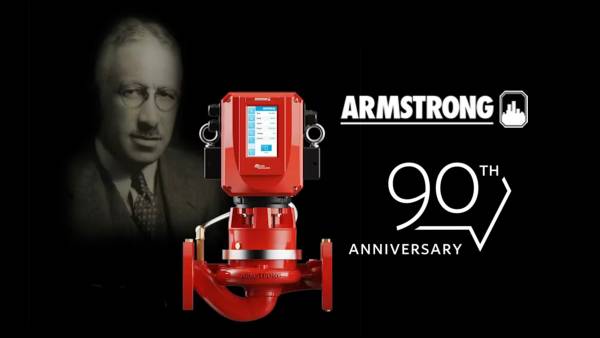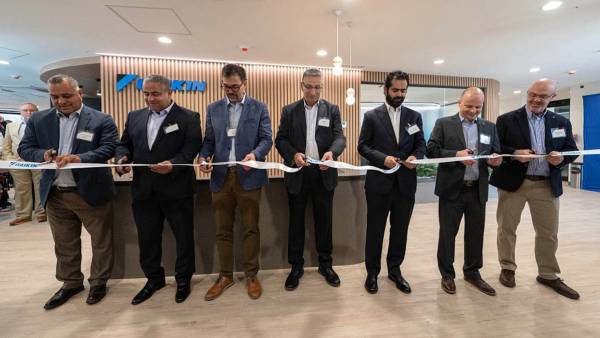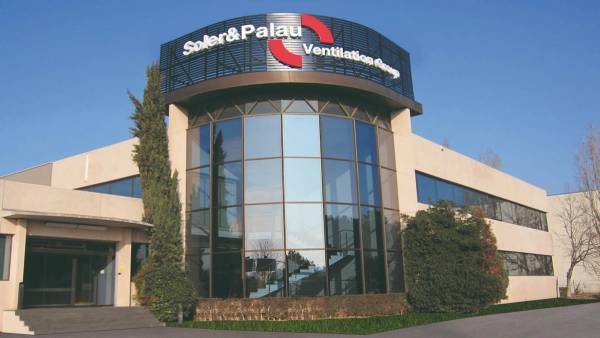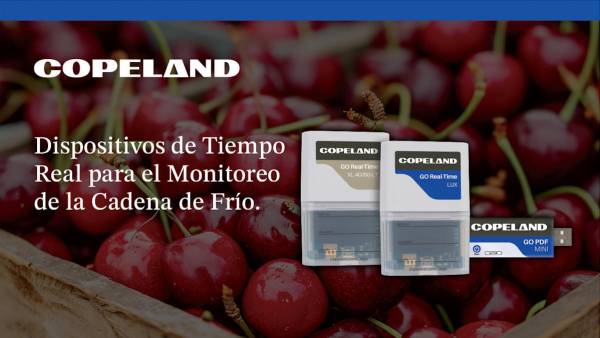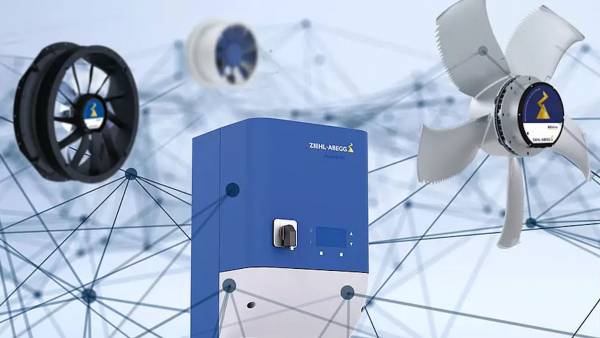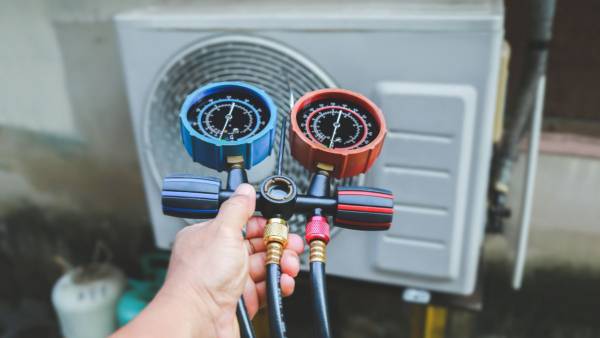Objective
The objective of air conditioning is to achieve, in an industrial plant, optimal and stable conditions of:
Temperature: either by heating or cooling. Humidity: by wetting or dehumidification. Air quality: by installing filters.Types of air conditioning systems
In the industrial field, the two most used air conditioning systems are:
All-water systems. For heating, the generating equipment produces hot water that feeds directly, or through an exchanger, to the transmission network. For cooling, exchangers are not used, but the cooled fluid from the collector goes directly to the transport network and from there to the evaporator. Its main element is the air conditioner or Air Treatment Unit (UTA). The UTAs are responsible for processing the air in the environment continuously to return it with the appropriate temperature and humidity conditions.Industrial applications of air conditioning
Although air conditioning is a widespread technology in the tertiary sector, where the level of user comfort is crucial (offices, hotels, theaters, hospitals, etc.), its implementation in the industrial sector is not so important.
Normally , UTAs are used in industry when, due to the nature of the product produced, the humidity and temperature conditions of the plant must be especially controlled, so that the quality of the product is not affected. Other times its implementation responds simply to comfort criteria.
The main industries that use air conditioning are:
Pharmaceutical Industry. Textile Industry. Food Industry. Chemical Industry. Automotive Industry. Industrial, Poultry and Livestock Buildings in general.However, almost all plants have a small office area attached, which will normally require air conditioning, regardless of the type of industry in question.
Thermal load
Thermal load means the heat that the air conditioning system must exchange with the plant. The thermal loads can be positive, in which case it is heat that must be eliminated (which happens in the summer months), or negative, which will correspond to an amount of heat that the air conditioning system must provide (in the winter months).
Summer thermal load: composed of the following heat flows:
Thermal gain throughthe enclosures of the room by conduction from a hotter outdoor environment. Thermal gain by insolationthrough the transparent walls of the enclosures. Thermal gain by natural or forced convection due to the unwanted entry of outside air, infiltration and renewal. Heat originated in internal thermal sources such as people, lighting, engines, industrial equipment in general, etc.Winter thermal load: only includes thermal losses due to conduction, infiltration and ventilation.
It is necessary to perform an accurate calculation of the thermal loads of a plant for the correct sizing of the appropriate UTA, taking into account the amount of heat that needs to be provided and / or eliminated.
Types of refrigeration
Although the result is the same, reducing the temperature of a fluid can be done in three ways:
By means of a cyclebased on mechanical compression: in which electrical energy is supplied to a compressor so that it condenses the refrigerant by increasing pressure. By means of an absorption-based cycle: in which thermal energy from a combustion is supplied to an absorption column, so that the refrigerant evaporates and can be reused. By means of cooling towers : they are able to cool large volumes of water by contacting water droplets with outside air.Types of moisturization
Spraying: liquid water is atomized in the form of microdroplets that are automatically vaporized.
Cell panel: it is placed in a wetting chamber, where dry air and water in the form of film come into contact soaking the panel.
Steam: Water vapor is directly injected from an external source through a dispenser.
The general operation of a UTA consists of the successive passage of an air stream through its different sections, which are:
Outdoor air intake. It must be located in a place where the air is clean. It includes the filters and fans that drive the air through the entire UTA. It can also include a preheating battery to prevent moisture from condensing. It consists of a heat exchange zone by means of batteries or electrical resistors and a wetting or dehumidification chamber (usually a cold battery). Liquid water droplets are separated from the air conditioner and distributed throughout the plant to be collected afterwards and taken to the recovery area. The air flow that leaves the plant is fractionated and part is recirculated to the inlet area, while the other part, before leaving, exchanges heat with the incoming air, to minimize losses and increase the energy efficiency of the system. Includes drive fans and filters. Once treated, part of the air-conditioned air stream is recirculated inside the plant while another part is replaced by fresh air from outside. A contribution of outside air is always necessary to ensure good ventilation of the enclosure.UTAs are generally made up of:
Housing
It is responsible for wrapping and protectingall internal elements.
You mustensure the tightness of the unit, especially when it is outdoors.
It includes access gates for maintenance, usually built in aluminum or steel, which must also have a watertight enclosure.

Ventilators
They drive the air that you want to air condition through the different parts of the unit.
They are centrifugal with blade impellers forward (action) or backward (reaction).
They are usually mounted directly on the engine, on a floating anti-vibration base.
Batteries
They constitute the heat exchange zone itself between air and water. They are used both to heat the air stream and to cool it.
The most common constructions are:
In copper tube and aluminium fins. In copper tube and copper fins. In copper tube and pre-lacquered aluminium fins. In galvanised and/or stainless steel tubes.Filters
They eliminate solid suspensions and undesirable gases, increasing air quality.
Mounting the filters inside the unit should ensure that the by-pass air leakage is not high.
Mufflers
Air conditioning systems containmany moving parts (motors, fans, etc.) that cause ahigh degree of noise pollution. The degree of silencing required depends on the specific needs of each plant, if applicable.
This element is much more necessary in applications for the tertiary sector, so in industrial it is usually dispensable.
Wetting chamber
Its function is to regulate the humidity of the air, to ensure its stability at the setpoint, both for industrial buildings where the degree of humidity is an important variable in the quality of the product (food industry), and to maintain thelevel of comfort in the plant.
Built in stainless steel.
Depending on the form of wetting, it includes sprayers, panels or steam injection.
Combustion chamber
It is necessary in cases where the air needs to be heated.
It is built in stainless steel and so that it can incorporate the right burner for the type of fuel fed.
Recuperators
They serve to take advantage of the higher temperature of the stale air that is expelled to the outside, so that it gives heat to the cold air of renewal.
They can be of several types:
Rotary. This system is capable of increasing the incoming air temperature by up to 15ºC in winter and reducing it between 4ºC and 8ºC in summer. In order for it to work, the air inlet and outlet ducts must be contiguous to each other. Heat transfer is not done directly between the two fluids but a third fluid is used as a carrier. Their efficiency is lower than in the case of rotary recuperators. Static air-to-air exchangers. Thermal plates or another type of exchange surface are used. The larger this surface, the better the results.
Cold-heat separation
UTAs are compact HVAC equipment, but the same effect can be achieved by installing independent cold and heat generation equipment:
The generation of cold is carried out with conventional air conditioning equipment . The generation of heat is carried out with electric heating units, aerotherms, heat pumps or with hot air generators for industrial use, which produce hot air by heat exchange with the fumes that are generated in a combustion chamber.
The installation of equipment of only cold or only heat is advantageous when the climatology of the geographical area of location of the plant presents very high temperatures in summer or very low in winter that make the existence of both unnecessary.
Direct Expansion or Variable Refrigerant Volume (VRV) Equipment
It is known as VRV because it varies the refrigerant flow according to conditioning needs, because it has a variable speed compressor.
It is used in centralized systems in which a distribution network of the refrigerated fluid reaches each terminal unit located inside.
An adequate ratio is established between the power delivered and that consumed.
Its use has a number of advantages:
Its high performance means significant energy savings, both in cooling and heating operations. They do not require large spaces for the installation of ducts or equipment. It allows total flexibility, for the zoning of sectors and for their regulation. Longer service life and fully electronic control. Good air distribution and satisfaction of thermal requirementsHygienic Air Treatment Units
Certain facilities, such as the storage of perishable products, require a high degree of environmental hygiene, so air conditioning must be especially careful in this regard. Hygienic UTAs incorporate:
A completely smooth interior finished in stainless steel A condensation tray with slope to avoid water stagnation (appearance of Legionella). Removable internal elements to facilitate cleaning. Cold and heat batteries mounted with a separation between both that allows access for maintenance and cleaning.Adaptation of the Equipment to the characteristics of the Plant
The choice of the type of air conditioning systementails advantages and disadvantages in each case, relating for example to the space necessary for its installation or its difficulty of maintenance.
Advantages and disadvantages of the types of air conditioning Characteristic equipment Space necessary for ducts Maintainability All air UTA Large, handles large volumes Few points to maintain, affordable All water Fan-Coil (fan coils) About 160 times less than for all air Complicated, face Separate heat-cold Hot air generators and air conditioning Depends on whether the two systems are installed at the once or just one of them Easy, independent VRV Unit VRV Small Moderate, expensive








